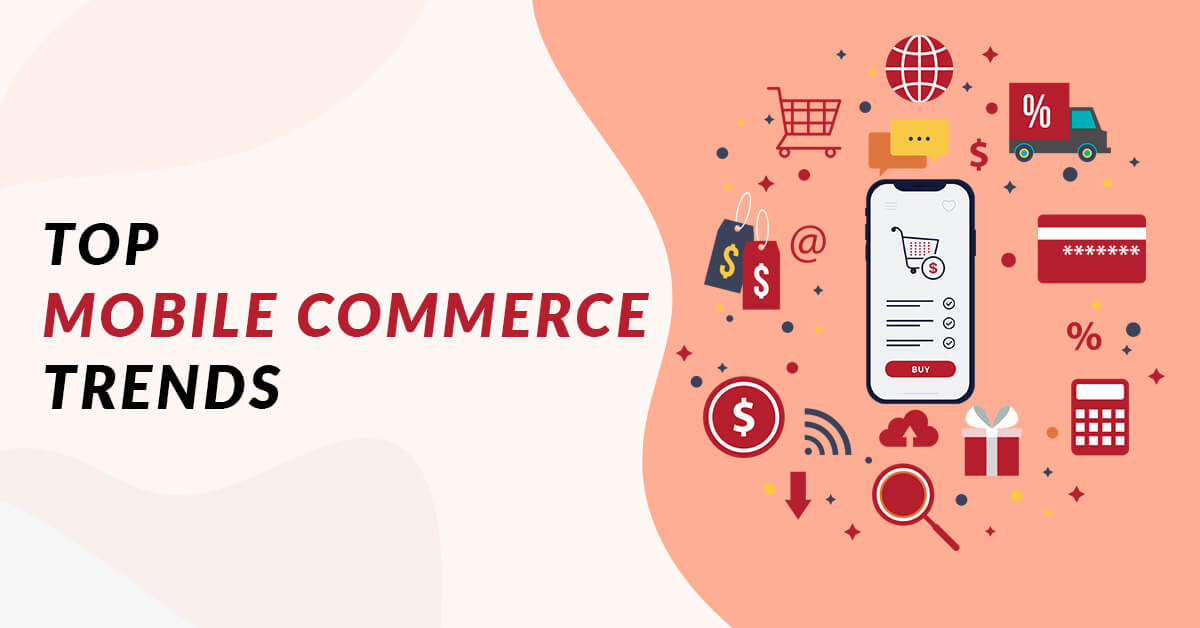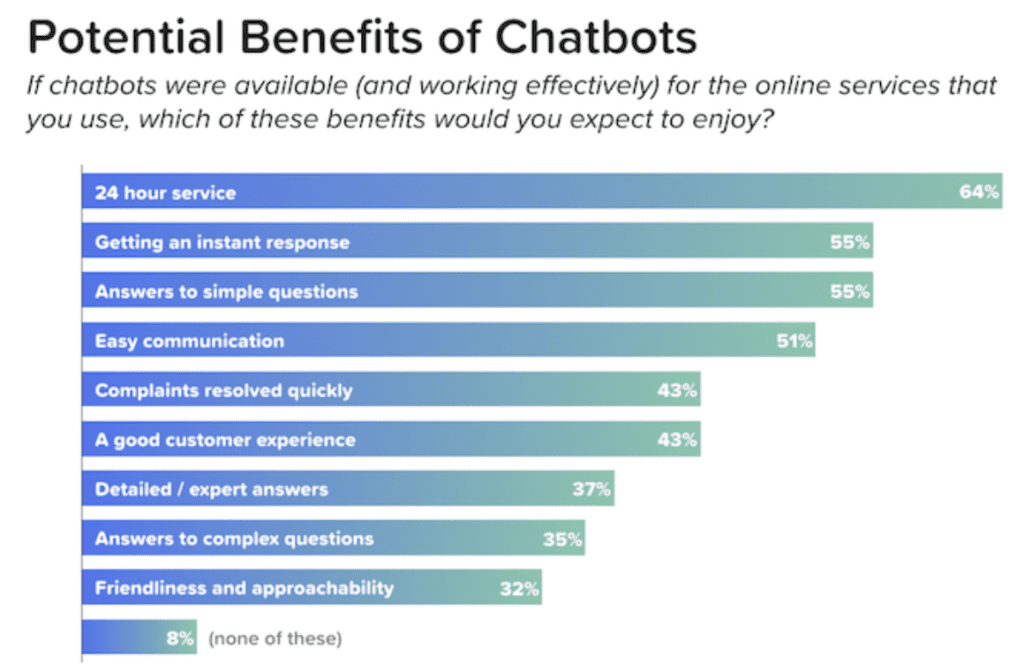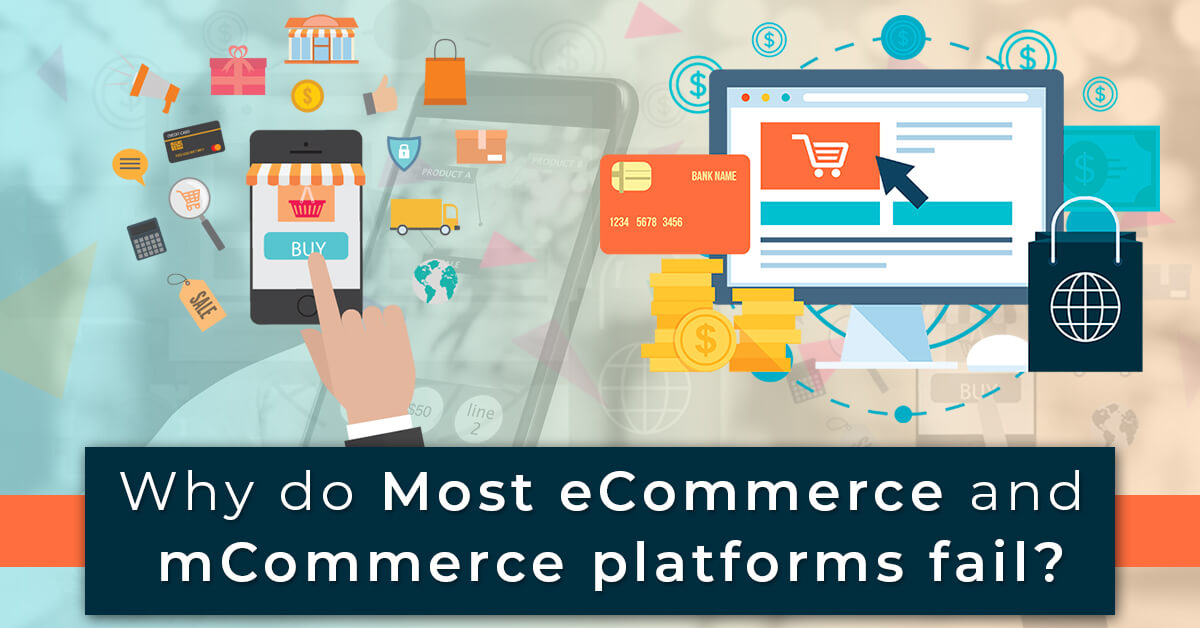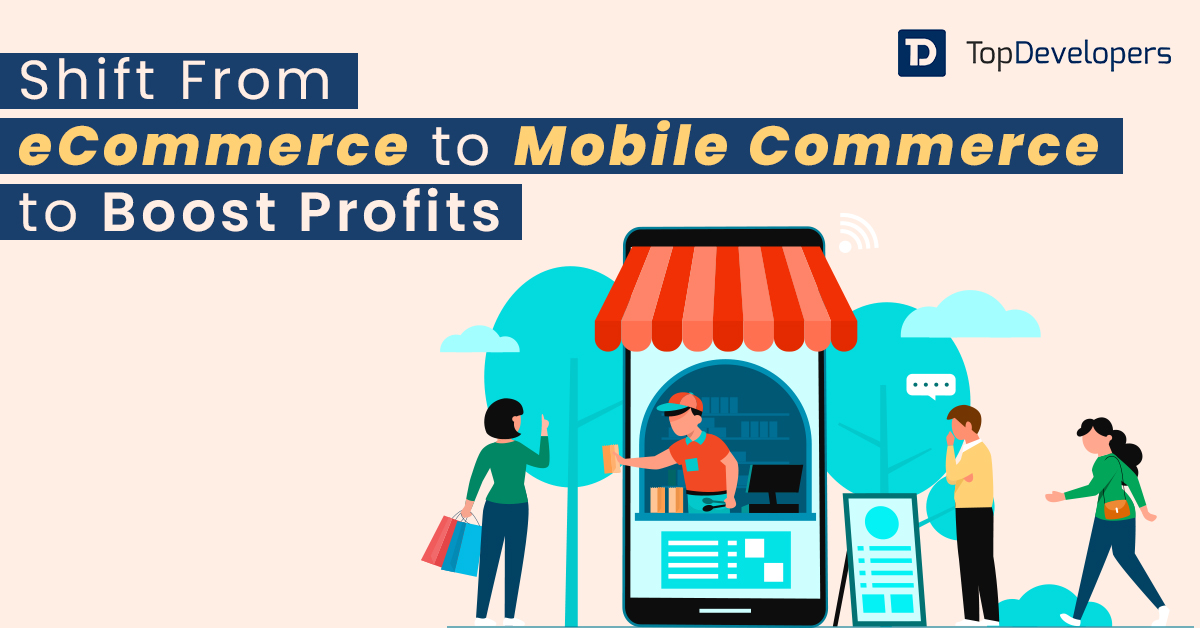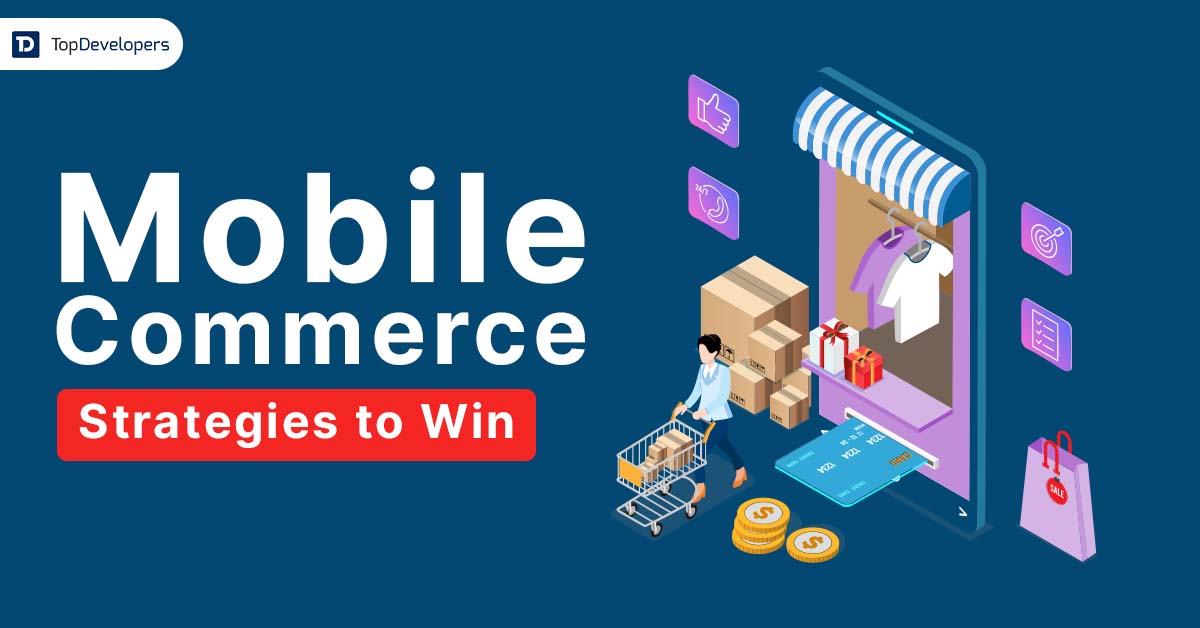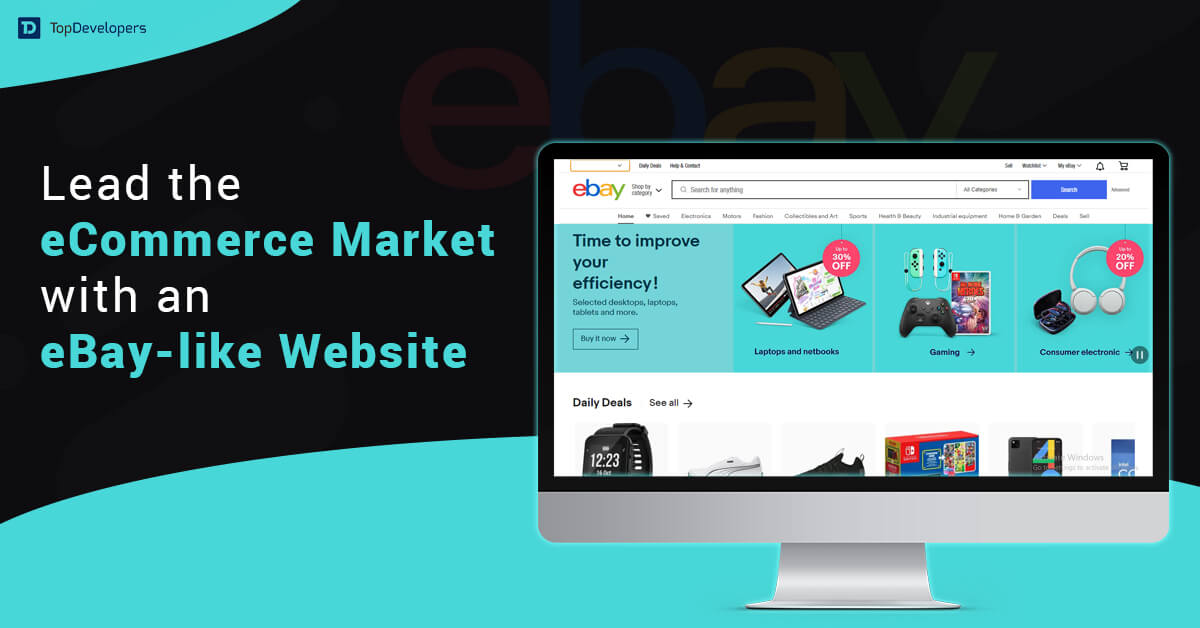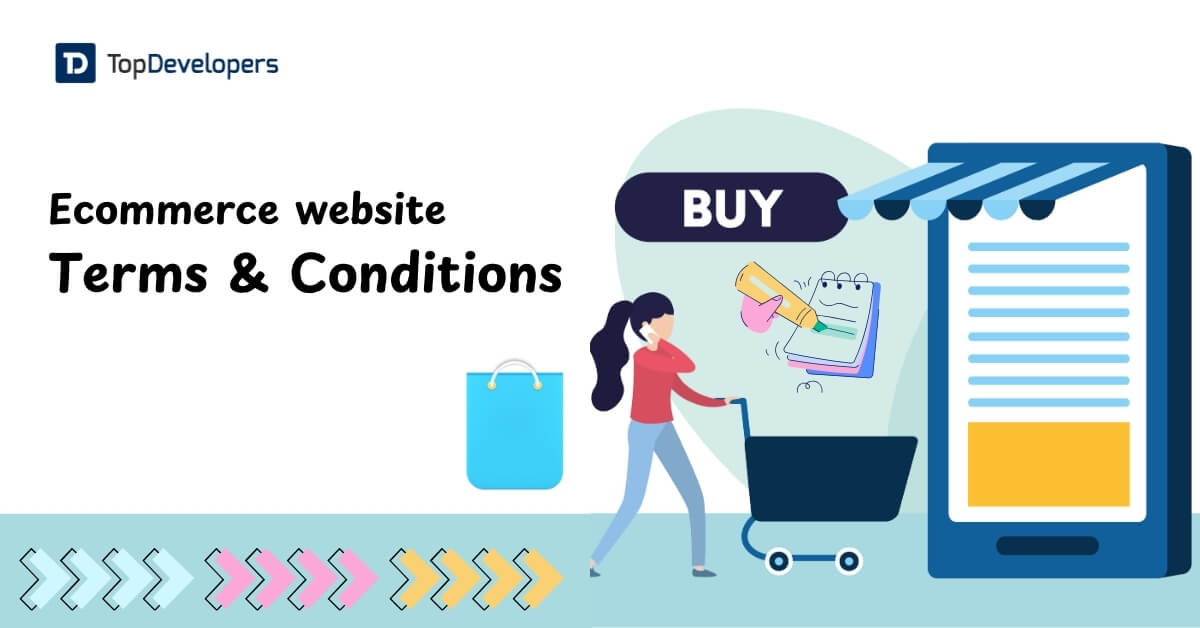
Mobile commerce (mCommerce) has revolutionized the way we live, work, and shop, becoming an integral part of daily life. From business transactions to personal errands, smartphones now dominate communications, shopping habits, and productivity tasks. This seismic shift in consumer behavior is reflected in the explosive growth of mCommerce.
According to recent data, the global mobile commerce market is currently valued at a substantial $6.3 trillion and is experiencing significant growth with a Compound Annual Growth Rate (CAGR) of 34%, indicating a rapid expansion in the sector. In the US alone, retail mCommerce sales reached $491 billion in 2023, projected to exceed $558 billion in 2024, making up a significant portion of total retail revenue.
For many, mobile shopping has become not just a convenience but a necessity. 60% of American adults now view mobile shopping as essential for its ease of use. However, despite its potential, many businesses still struggle to fully leverage the power of mCommerce, often hindered by outdated mobile strategies and subpar app experiences.
To thrive in this dynamic landscape, businesses must understand the evolving trends that shape mobile commerce and adopt cutting-edge strategies to stay competitive. This guide will delve into the most impactful mCommerce trends for 2025, providing actionable insights and a roadmap for businesses aiming to harness the full potential of mobile commerce. Whether you’re a seasoned retailer or new to the space, aligning with the top eCommerce app development companies can ensure you remain ahead of the curve.
Table of Contents
- A brief explanation of mCommerce
- Key Mobile Commerce Trends Shaping 2025
- Shopping via Mobile Apps
- Brands tap into zero-party data to personalize offers.
- Sales From Smartphones and Tablets
- Ultra-responsive mobile site design
- Metaverse
- Location-based marketing
- Social commerce
- Video Marketing
- Retail mobile apps
- One-click ordering
- Mobile Payments
- Voice Search to Find Products
- Chatbot
- Artificial Intelligence and Machine Learning
- QR Codes
- Omnichannel Mobile Shoppers
- Multichannel Marketing
- Mobile Fraud Prevention
- Future of mCommerce
A brief explanation of mCommerce
Mobile commerce also known as mCommerce or m-commerce is one of the most promising trends in eCommerce industry. This space includes everything related to any monetary transaction that is done through the mobile device. While on eCommerce, you associate buying or selling things using any digital platform, mobile commerce is only related to mobile devices such as smartphones and tablets.
The emergence and evolution of mobile commerce have also given rise to a plethora of new services. It includes:
- Mobile banking
- Electronic money transfer
- Location-based services
- Mobile Marketing
- Digital content delivery and purchase
Key Mobile Commerce Trends Shaping 2025
Mobile commerce trends have been evolving as there are new advancements in technology every year. Below are the top mobile commerce trends of 2025 that will go beyond:
Shopping via Mobile Apps
Mobile apps are rapidly becoming the backbone of mobile commerce. While mobile-friendly websites are still essential, they no longer suffice to meet the expectations of today’s digital shoppers. Consumers now demand seamless, intuitive, and personalized shopping experiences—something mobile apps deliver effortlessly.
Consider this: 85% of users prefer shopping via mobile apps over mobile websites, thanks to features like saved user profiles, personalized recommendations, and faster navigation. Furthermore, mobile apps boast a 157% higher conversion rate compared to mobile websites. For eCommerce businesses, this statistic translates to more revenue and stronger customer retention.
To keep up with this trend in 2025, businesses must invest in eCommerce app development. Those who act early will lead the market, while those who delay risk falling behind.
Brands tap into zero-party data to personalize offers.
It’s common and understandable for customers to worry about their privacy when surfing online, especially while making purchases. The fact that governments are facilitating mobile buyers’ use of private browsing modes on the Internet is a significant concern. For instance, Google Chrome will start restricting third-party cookies in 2024, posing challenges that companies must address.
Even while this is wonderful news for consumers who value their privacy, DTC businesses can only get a certain amount of information from consumers. According to our analysis, at least 28% of IT decision-makers worldwide anticipated that the new rules governing consumer data and privacy would prevent them from achieving their growth objectives for 2024 and beyond.
Producing zero-party data—information willingly provided by your customers—is one method to fight that. Most companies want to use tools like quizzes to provide their consumers with personalized product suggestions.
Sales From Smartphones and Tablets
Smartphones dominate mobile commerce sales, with purchases through these devices accounting for $418.9 billion in revenue in 2024, compared to $69.1 billion from tablets. This clear preference highlights the importance of tailoring shopping experiences specifically for smartphones.
The reasons are simple: smartphones are more portable and accessible, making them the go-to device for on-the-go shopping. However, businesses must optimize their platforms for both smartphones and tablets to maximize reach. For example:
- Smartphones: Perfect for real-time push notifications and location-based offers.
- Tablets: Ideal for detailed product visuals and extended browsing sessions.
While tablets offer utility, their share in mCommerce is declining. For instance, tablet sales as a percentage of mobile commerce volume have dropped from 18.2% in 2019 to just 14.1% in 2023.
Understanding these consumer preferences allows businesses to craft device-specific strategies, enhancing user engagement and driving more conversions.
Ultra-responsive mobile site design
Although mobile purchasing has become increasingly popular, buyers still need help concerning obstacles. According to mobile eCommerce statistics from a poll, 67% of respondents cited “pages and links being too small to click on” as a barrier to buying on mobile devices. Another 36% of users said that “difficulty finding what they’re looking for” was a barrier to mobile buying.
With 61% of all Google searches conducted on mobile devices, having an ultra-responsive website is essential. Slow-loading pages or hard-to-navigate sites drive users away, impacting both sales and search engine rankings. For instance, Google’s transition to mobile-first indexing considers a website’s mobile experience when deciding where each page should rank—even if the searcher opens it on a desktop. So, it is recommended that when you think about creating a mobile commerce strategy, leverage the skills of some topmost eCommerce developers to optimize your website for mobiles and smartphones as they are aware of technology industry trends and benefits.
In 2025, businesses must prioritize:
- Faster load times.
- Mobile-friendly layouts with intuitive navigation.
- Larger, easily clickable buttons.
Collaborating with expert developers to optimize mobile site performance will be a crucial step in staying competitive.
Metaverse
The term “Metaverse” has become very popular in the internet community and metaverse trends will continue in all sectors including mobile commerce. Consumer participation in a different virtual world is rising, not just in gaming metaverses like Roblox. This will enable customers to buy virtual goods from their preferred brands.
How is Metaverse a New Big Thing Startup Enterprises Should Invest in?
Location-based marketing
Location-based marketing is one of the popular trends in the advertising industry. The targeted mobile advertising spend in the United States alone is forecasted to surpass $32 billion by the end of 2023. Many leading retail companies such as Target, Macy’s, and J C Penney have turned towards location-based marketing to increase sales and drive in-store traffic.
Brands use location based marketing to help consumers find the nearest location of their favorite stores. Retailers also utilize location-based marketing to provide a more personalized shopping experience to their users.
Location-targeted ads are an effective way of cutting through the marketing noise and delivering offers that meet the needs of the consumers.
Retailers and eCommerce industry can benefit from the following two types of location-based ad strategies;
Geofencing
In geofencing, the retailers create a specified radius around a physical location in which targeted ads are served to attract customers.
Geotargeting
In geotargeting, the retailers target the customers based on past visits to specific locations.
Location-based advertising will be one of the hot mCommerce trends as it will help brands connect with users on a deeper level.
Social commerce
Social commerce is revolutionizing how consumers shop. Platforms like Instagram and Facebook now allow users to complete purchases without leaving the app. This seamless experience eliminates barriers in the buying process.
The global social commerce market is expected to reach $2.9 trillion by the year 2026.
A study on Instagram shopping showed a 1,416% traffic boost and a 20% revenue increase for brands using shoppable posts. As more businesses adopt social commerce in 2025, it’s expected to drive significant growth in the mCommerce landscape.
Features like product tagging in posts and stories eliminate friction in the buying process, turning casual scrollers into loyal customers.
By 2025, social commerce will play an even bigger role in mobile commerce, with businesses leveraging these platforms not just for brand awareness but as primary sales channels.
Social commerce can provide the following benefits to a mCommerce business;
- Consistent audience growth
- Better reach amongst millennial
- Improved customer insights
Video Marketing
Video marketing will make up more than 82% of all consumer internet traffic in 2024. That will be 15 times higher than the 2017 levels. According to EyeWideDigital, a video boosts the conversion rate by 80%. One reason for the high conversion rates of a video, as opposed to text, is that humans process an image much faster as compared to text.
The popularity of video as a marketing tool has received an impetus with the emergence of short video platforms Such as YouTube Shorts, Instagram Reels, and TikTok. Many businesses have now built their own video production departments to focus on video marketing.
eCommerce business owners use video marketing in the following ways
• Provide video of the products on the product page
• Allow the users to attach the product videos to their reviews
Video marketing can prove to be one of the most important trends to watch out as it is a proven performer in terms of conversion rate.
Retail mobile apps
For mobile shoppers, a better user experience is a major selling point. However, consumers use retail apps rather than transition from websites on their mobile devices. In fact, mobile apps are preferred by 85% of users over mobile websites. The use of shopping apps on tablets and smartphones is reported by 69.4% of internet users. This highlights why many businesses switch from eCommerce to mCommerce for better sales growth.
Retail mobile apps, as opposed to ecommerce websites, which are occasionally mobile-friendly optimized, are made exclusively for smartphone devices. Customers can often navigate and find what they’re seeking more easily.
One-click ordering
Streamlining the checkout process is a top priority for delivering a comprehensive experience to mobile device users. Traditional checkouts require users to input multiple details, leading to frustration and high cart abandonment rates (97% for mobile sites).
Enter one-click ordering, which simplifies this process. Mobile apps enable users to save their details securely, allowing purchases with a single tap. This technology reduces friction, resulting in a cart abandonment rate of just 20% for mobile apps.
By implementing one-click ordering, businesses can drive higher conversions while offering unparalleled convenience.
Mobile Payments
Mobile wallets like Apple Pay, Google Pay, and Samsung Pay are redefining how consumers transact. In 2021, $274 billion in mobile payments were processed, and this figure continues to grow annually at 62%.
Mobile wallets offer:
- Speed: Transactions are completed in seconds.
- Security: Data encryption ensures safe payments.
- Convenience: Users can pay directly from their smartphones or wearables.
In 2025, businesses that integrate mobile payment solutions will stand out by offering customers the flexibility and safety they expect.
NFC Payments
One of the most important mobile commerce trends is NFC(Near-Field Communication). NFC is a part of a multichannel experience that enables contactless payment for mobile device owners. Thus, it allows them to complete their overall in-store transactions swiftly.
The NFC systems use the same chip found in credit cards, but when the mobile owners opt for these services, they are referred to as NFC payments only.
The prime objective of NFC is to remove the complexity of the payment process and complete all kinds of transactions speedily. Moreover, the users can use the NFC tags to obtain more information about the product as well. Thus, they also make their entire shopping experience more eventful.
Voice Search to Find Products
Voice commerce is rapidly gaining traction as consumers turn to digital assistants like Amazon Echo and Google Home, making voice-based shopping more accessible to consumers. By 2025, voice shopping is projected to reach $40 billion, a significant leap from $2 billion in 2018.
Voice search simplifies product discovery, with 51% of consumers using voice commands to research products and 22% completing purchases. For businesses, optimizing their platforms for voice search is no longer optional. This includes:
- Using natural language keywords.
- Structuring content for conversational queries.
- Integrating voice search capabilities into mobile apps.
By embracing voice commerce, businesses can cater to the growing segment of hands-free shoppers.
Chatbot
It’s no hidden fact that chatbots have been around in the digital realm for ages. And now leveraging the chatbot technology for eCommerce platforms can help to achieve new levels of customer satisfaction.
Rendering personalized services is very important as it plays a pivotal role in keeping customers hooked to mCommerce app. Chatbots, although with some amazing benefits, are still finding their feet in the mobile world. This gives you an opportunity to ride on one of the most promising mCommerce trends and take the early bird advantage from your peers.
Below is a complete pictorial representation of the potential benefits of chatbots in mobile commerce
Mobile Chatbots
Chatbots are reshaping customer service in the eCommerce space. Powered by AI, they provide instant responses, personalized recommendations, and around-the-clock support—all critical for enhancing the mobile shopping experience.
In 2024, 54% of consumers preferred chatbots over human reps for time-sensitive queries. By integrating chatbots into mobile apps, businesses can:
- Resolve customer issues quickly.
- Offer tailored product suggestions.
- Reduce operational costs.
Mobile chatbots are expected to become a cornerstone of mCommerce in 2025, as businesses strive to deliver efficient and satisfying customer experiences.
Artificial Intelligence and Machine Learning
Artificial Intelligence allows the technology to understand the pattern of repetitive human habits. Along with Machine learning, it has become one of the hottest m-commerce trends going around in the realm of e-commerce.
With AI and ML, marketers can automate and give customers a personalized shopping experience all at once. Before the emergence of modern algorithms, the process of recommendations was done manually and it was error-prone.
Along with recommendations, Machine Learning can also help in a product by giving thoughtful and more relevant results. By providing more personalized recommendations Artificial intelligence and Machine Learning can increase sales for businesses.
QR Codes
Well-known business brands such as Starbucks, Walmart, and Boston Market have integrated QR codes as an integral part of their marketing strategy. While McDonald’s has put QR codes on its packaging to allow the consumers to get details of the nutrition value on their food, Boston Market enticed consumers towards its restaurants by offering them prizes if they scanned a QR code.
Retailer Express is a brand that places QR codes on the emails that it sends to the consumers, this allows them to shop the featured looks directly from the email.
The QR codes provide the following benefits to marketers
- Effective call-to-action tool
- Enhance SEO and SMO
- Measure the effectiveness of the marketing campaign
QR code is one of the most exciting mobile commerce trends that will be explored by brands to increase their brand value.
Omnichannel Mobile Shoppers
The modern shopper uses multiple channels—mobile apps, websites, and physical stores—before making a purchase. Research shows that 73% of consumers shop across multiple channels, and 75% expect consistent experiences across all touchpoints.
An effective omnichannel strategy ensures that customers receive the same level of service, regardless of the platform. For example:
- Sending push notifications for discounts when a customer enters a physical store.
- Personalizing recommendations based on browsing history across channels.
By adopting an omnichannel approach, businesses can enhance customer loyalty and drive sales.
Multichannel Marketing
In the modern era, a seamless shopping experience is one of the primary requirements of the customers. Thus, including the trending omnichannel approach in mobile commerce strategy would be a better choice. The new-age customers tend to switch between devices; thus a multi-channel marketing approach will help increase the range of products.
Moreover, a multichannel marketing strategy is not as hard as it seems. Start it by following these simple steps:
- Always have personalized content according to the buying habits and likes of the customers.
- Focus on using consistent branding of your product across all the channels. This technique will increase the ‘positive word of mouth’ publicity of your product.
- Allow your customers to create a user profile across multiple platforms. It will help to get more attention and retention rate with more user interaction.
Mobile Fraud Prevention
As mobile commerce grows, so does the threat of fraud. 65% of fraudulent transactions now originate from mobile devices, making security a top priority for businesses.
Mobile apps offer enhanced security features like:
- Encrypted payment gateways.
- Two-factor authentication.
- Secure user profiles.
Investing in these measures not only protects customers but also builds trust, a key driver for repeat business in the mCommerce space.
Future of mCommerce
Mobile commerce is an undisputed rising star in the ecommerce realm. Moreover, as far as the numbers are concerned, they are terrific for mcommerce. For example, the total spending on mCommerce is projected to reach more than $740 billion in 2024. This means it has a whopping 150% increase as compared to its status in 2018.
In addition, research has also shown that more than 66% of the total money spent by customers in online shopping is done using a mobile device.
As the trends suggest, the future of the eCommerce realm will be dominated by mobile commerce. Moreover, a comprehensive eCommerce development guide will assist you in building a competent mobile commerce platform. To ride the bandwagon of mCommerce, you need to be aware of all the latest mobile commerce trends. Moreover, with the expansion of technology, businesses would be looking to build a niche mobile commerce market to cater to the needs of their customers.
Furthermore, it has become necessary for businesses to have a competent mobile commerce strategy for the upcoming trends.
 Avantika Shergil
| Dec 17, 2024
Avantika Shergil
| Dec 17, 2024
Avantika Shergil is a technology enthusiast and thought leader with deep expertise in software development and web technologies. With over 8 years of experience analyzing and evaluating cutting-edge digital solutions, Avantika has a knack for demystifying complex tech trends. Her insights into modern programming frameworks, system architecture, and web innovation have empowered businesses to make informed decisions in the ever-evolving tech landscape. Avantika is passionate about bridging the gap between technology and business strategy, helping businesses build customized software and website, and understand about different tools to leverage effectively for their ventures. Explore her work for a unique perspective on the future of digital innovation.
